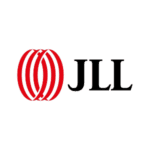 As the travel and hospitality industry climbs out of the difficult and, in some cases, catastrophic pandemic, it is crucial for organisations to adapt to evolving trends and capitalize on the ever growing thirst from consumers to resume traveling. Several key lessons and trends have emerged, indicating that businesses must embrace change to maintain market relevance.
As the travel and hospitality industry climbs out of the difficult and, in some cases, catastrophic pandemic, it is crucial for organisations to adapt to evolving trends and capitalize on the ever growing thirst from consumers to resume traveling. Several key lessons and trends have emerged, indicating that businesses must embrace change to maintain market relevance.
In this article, we will explore these emerging trends and highlight the role of technology as a solution to meet the demands of the modern traveler.
- Longer guest stays: The pandemic has demonstrated that flexible work arrangements allow employees to combine work and leisure. This has led to a surge in searches for extended stays. Since 2021, internet search engines have seen a sharp increase in extended stay searches. The most dramatic increase in searches were for periods greater than 6 months. This is not to discount the importance of the standard 7-14 day traveler which is still quite the norm, but guests are taking advantage of remote work opportunities.
- Experiential Travel: Travelers increasingly seek immersive experiences beyond typical tourist activities. They crave an authentic connection with local cultures, history, and social impact opportunities. travelers want a more immersive experience, to see the location through the lens of a local and to not only see, but smell, taste, hear, and feel what makes that location unique. The demands for these types of activities have grown exponentially since Covid, emphasising the need for destinations to offer unique and personalized encounters that engage the senses and offer a deeper understanding of the location.
- The Rise of Generation Z: The travel market is witnessing a shift as Generation Z enters the scene. This new generation of travelers has distinct expectations and preferences. They value authentic and local experiences, are willing to spend more on travel, and often embark on longer trips. Having grown up with technology, Gen Z relies heavily on digital platforms and social media for research, booking, and sharing their travel experiences. They have grown up with the mantra “there’s an app for that” and they employ these technological demands in every facet of life including how they research and shop for experiences, where they decide to go, and where they intend to stay and for how long. Within the next 10 years Gen Z’ers will make up the majority of the travel consumer market and carry with them these priorities (and their wallets).
- Sustainability as a Priority: Environmental consciousness has become a key factor influencing travel choices. It has affected things as complex as biofuel production and restoration of natural resources, to things as seemingly benign as the type of straws that are used. Travelers now prioritize sustainable practices, from transportation to accommodations and dining. They actively seek destinations that promote eco-friendly initiatives and demonstrate a commitment to minimizing carbon footprints. Sustainability has emerged as one of the top priorities for the modern traveler.
The time to consider these trends is now as these brushstrokes paint a picture of an environmentally conscious, generally younger traveler who tends to desire more “real” experiences and make their average stay longer. They also carry with them life experiences and expectations weighted heavily with the availability of technology at their fingertips.
To illustrate this point, let us consider a relatable case study:
A beach barbecue is scheduled for 6PM and Beach 1. Reservations have been made and everything is in order, until (who would have dreamed it possible) something goes wrong. The BBQ must be moved, for whatever the reason, to The Tropics Cafe and will be delayed by 30 minutes to allow for the transition. The assistant front desk manager tales an hour to print 200 paper notices and place them under doors to make this notification. Attendance at the BBQ is sparse. Guests who were shopping all day return to the resort and report to Beach 1 at 6PM, only to find… nothing. Frustrated, they go to a neighboring restaurant and return to their rooms later where they find the note on the floor. This frustration grows as they wonder what to do with this recyclable aside from putting it in the trash. Now comes time for their online review:
“The Tropics Resort pool was nice, staff attentive, and rooms clean. They get 2 Stars for communication, however and 1 star for sustainability. Their excuse for communication, wasted paper under the door. There must be a better way! Frank’s Grill across the street, however, had great, friendly staff, delicious food served from a QR code driven menu and right down to the paper straws, an experience I can feel good about. One and a half stars for the Tropics Resort, five stars for Franks!”
The dramatic nature of the example aside, these types of issues are an unfortunate reality for the industry. The handling and communication of such situations significantly influence guests’ perceptions and ultimately impact the establishment’s bottom line.
Consider the costs involved: In the Caribbean, a single ream of copier paper can cost more than $10 USD. When factoring in the time spent by staff to distribute the notices and the knowledge that each piece of paper will ultimately be discarded, the day-to-day expenses become staggering. Additionally, guests may receive the notification hours after returning to their rooms, which further adds to their frustration. These practices also contradict the sustainability initiatives promoted in the region.
Now, let’s delve into the financial implications for the hotel. How much did it cost the establishment to deliver these notifications in this specific scenario? Multiply that by the frequency at which such incidents occur. The negative impact also extends to the lower-than-expected barbecue attendance, resulting in wasted food and lost revenue. Furthermore, the preventable frustration experienced by guests leads to negative reviews, potentially dissuading future guests from choosing the hotel.
Fotrunately, there are more modern and sustainable ways to communicate with travelers. Simple, user-friendly technological tools exist to make work more efficient on hotel staffers by making communication with guests as simple as sending a text message. Since most travelers keep their phones and mobile devices with them throughout a trip, it is possible to turn these devices into a sustainable solution for communication challenges.
Looking ahead, technology solutions are not only expected but essential to meet the expectations of future travelers. Failure to adapt to these trends and leverage technology can have tangible impacts on a business’s financial performance. To thrive in the evolving travel and hospitality landscape, organizations must become leaders in adopting innovative technology, rather than waiting for competitors to set the pace.
In closing, as the saying goes, “You can lead, follow, or get out of the way.” The future of travel and hospitality is already upon us. Will you embrace it and be a leader, wait until your competitor shows you the way and follow, or will you simply get out of the way and hope for the best?




















